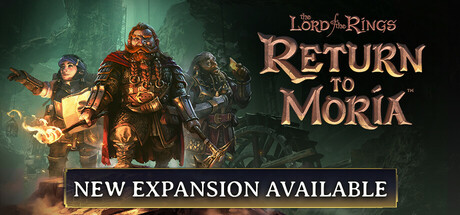Smalland: Survive the Wilds on Steam - User reviews, Price & Information
Experience a big adventure on a tiny scale! Enjoy multiplayer survival in a vast, hazardous world. Preparation is key when you're this small & at the bottom of the food chain. Craft weapons & armour, tame & ride creatures, build encampments & explore a strange new land.
Smalland: Survive the Wilds is a survival, open world survival craft and multiplayer game
developed by Merge Games
and published by Merge Games and Maximum Entertainment.
Released on February 15th 2024 is available only on Windows
in 10 languages: English, French, German, Spanish - Spain, Japanese, Portuguese - Brazil, Russian, Korean, Simplified Chinese and Traditional Chinese.
It has received 8,235 reviews of which 6,831 were positive and 1,404 were negative resulting in a rating of 8.1 out of 10. 😎
The game is currently priced at 34.99€ on Steam, but you can find it for 8.95€ on Instant Gaming.
The Steam community has classified Smalland: Survive the Wilds into these genres:
Media & Screenshots
Get an in-depth look at Smalland: Survive the Wilds through various videos and screenshots.
System requirements
These are the minimum specifications needed to play the game. For the best experience, we recommend that you verify them.
- Requires a 64-bit processor and operating system
- OS *: Windows 7 SP1
- Processor: Intel(R) Core(TM) i5-9400 CPU @ 2.90GHz or equivalent
- Memory: 8 GB RAM
- Graphics: NVIDIA GeForce GTX 1650 or equivalent
- DirectX: Version 12
- Network: Broadband Internet connection
- Storage: 20 GB available space
- Additional Notes: Connecting to Epic EOS is required for online multiplayer
User reviews & Ratings
Explore reviews from Steam users sharing their experiences and what they love about the game.
Similar games
View allSolace Crafting
Embark on an adventure set in a fantasy survival RPG. Visit a borderless, open world where you manage resources to construct your base and new types of equipment to support your conquest.The Lord of the Rings: Return to Moria™
The only survival crafting game set in the Fourth Age of Middle-earth™. Embark on an epic journey to reclaim the Dwarven homeland of Moria, and explore, craft, and build in procedurally generated worlds. Play as a solo adventurer, or join friends in co-op gameplay for up to 8 players.Green Hell
Plunge into the open-world survival simulation set in the extreme conditions of the uncharted Amazon jungle. Use real-life survival techniques to craft, hunt, fight, and gather resources, set a makeshift shelter, or raise a fortress. Survive alone or team up with your friends and challenge the jungle together.Voidtrain
Become a crew member of an Interdimensional Express Train! Discover a new world full of mysterious creatures, enemies and places. Upgrade and customize your train, gather new materials and build better weapons. Play solo or online сo-op with up to 4 people.Volcanoids
A base-building open-world survival shooter that replaces your typical base with a giant drill. Alone or with friends, explore an island plagued by eruptions, upgrade your drill, and fight robots to uncover what's been hiding beneath the surface.Nightingale
Nightingale is an open world survival crafting game, where you’ll adventure across the mysterious and dangerous Fae Realms. As a daring Realmwalker, you’ll defeat monstrous enemies, survive hostile environments, and build elaborate estates in a visually stunning Gaslamp Fantasy world.Creativerse
A sandbox adventure game as big as your imagination.Scrapnaut
Scrapnaut is a co-op & singleplayer top-down, base building survival game with steampunk elements. Explore an open world with different biomes, take care of oxygen, manage your farms, generate electricity, build your home and much more!Necesse
Build, quest, and conquer across an infinite procedurally generated world. Play alone or with friends as you establish a settlement and explore deep dungeons, fight monsters and bosses, mine rare ores, craft magical equipment, recruit specialists for your colony, and more!Dawn of Defiance
You are the Defier, subjected to a mythic plot across ruined isles. In this Greek myth-inspired survival craft, ascend from weak soldier to god-like anti-hero. Build impressive Greek structures, craft and upgrade your gear, and face down the trials of Gods with up to 3 friends.Data sources
The information presented on this page is sourced from reliable APIs to ensure accuracy and relevance. We utilize the Steam API to gather data on game details, including titles, descriptions, prices, and user reviews. This allows us to provide you with the most up-to-date information directly from the Steam platform.
Additionally, we incorporate data from the SteamSpy API, which offers insights into game sales and player statistics. This helps us present a comprehensive view of each game's popularity and performance within the gaming community.
Last Updates| Steam data | 11 April 2025 00:11 |
|---|---|
| SteamSpy data | 12 April 2025 05:22 |
| Steam price | 13 April 2025 12:47 |
| Steam reviews | 12 April 2025 13:45 |
If you'd like to dive deeper into the details about Smalland: Survive the Wilds, we invite you to check out a few dedicated websites that offer extensive information and insights. These platforms provide valuable data, analysis, and user-generated reports to enhance your understanding of the game and its performance.
- SteamDB - A comprehensive database of everything on Steam about Smalland: Survive the Wilds
- SteamCharts - Analysis of Smalland: Survive the Wilds concurrent players on Steam
- ProtonDB - Crowdsourced reports on Linux and Steam Deck Smalland: Survive the Wilds compatibility

























